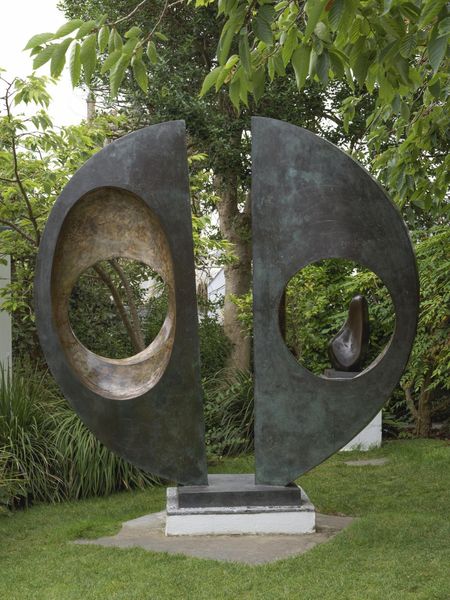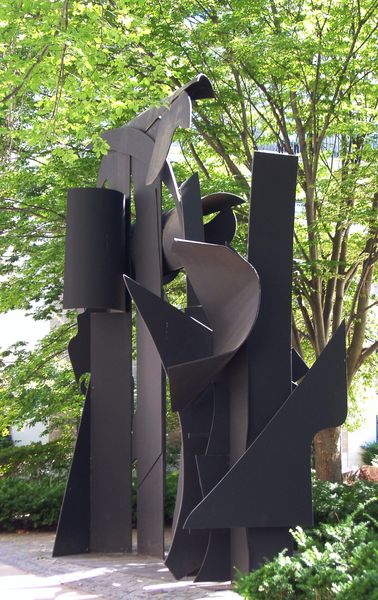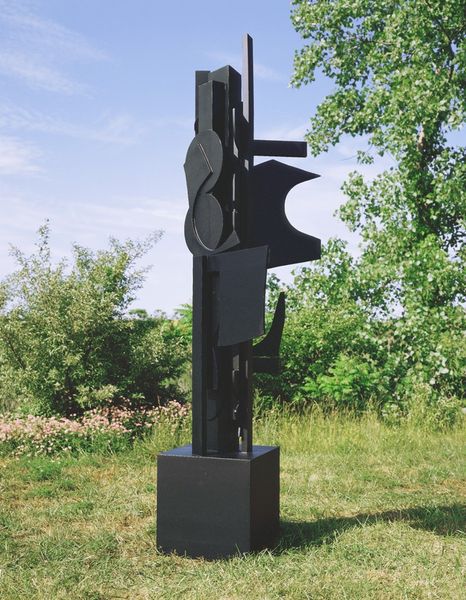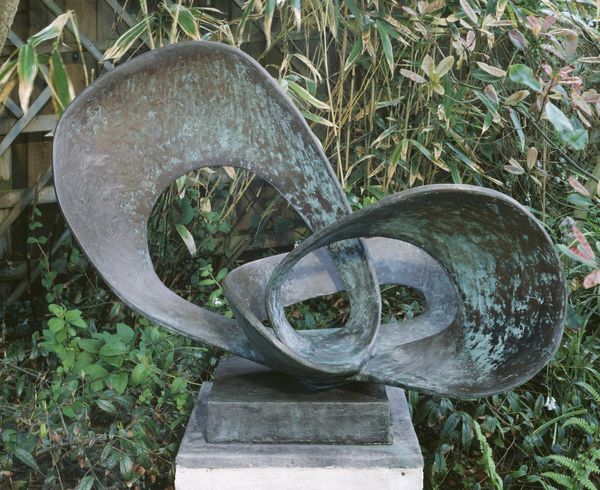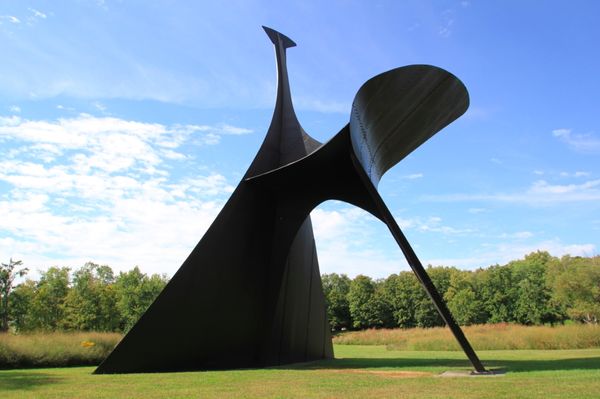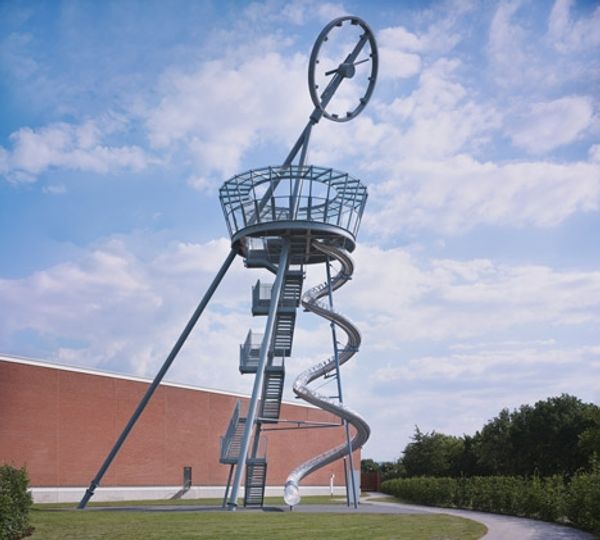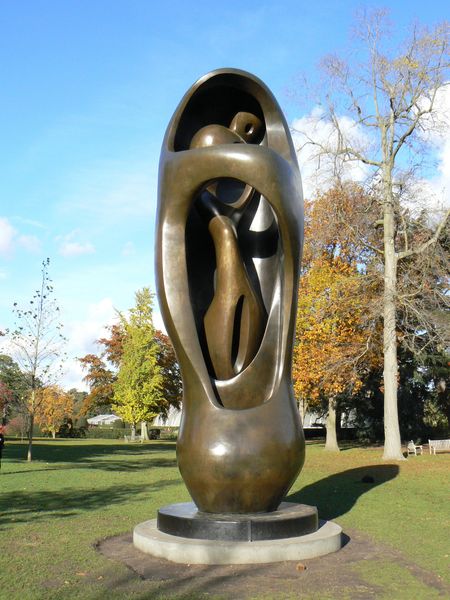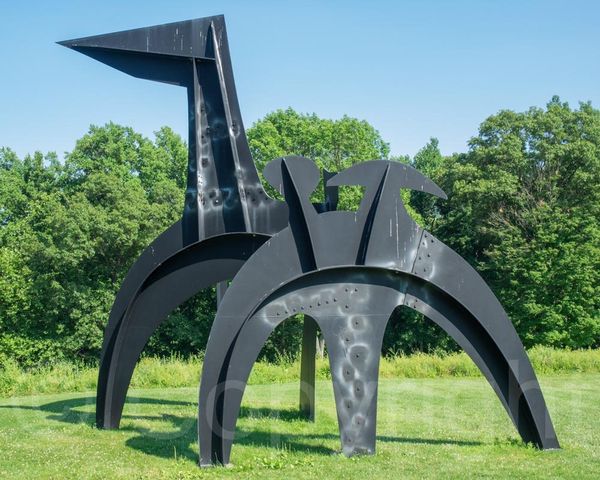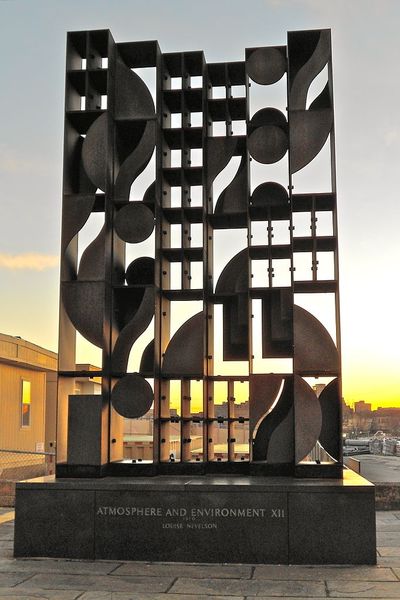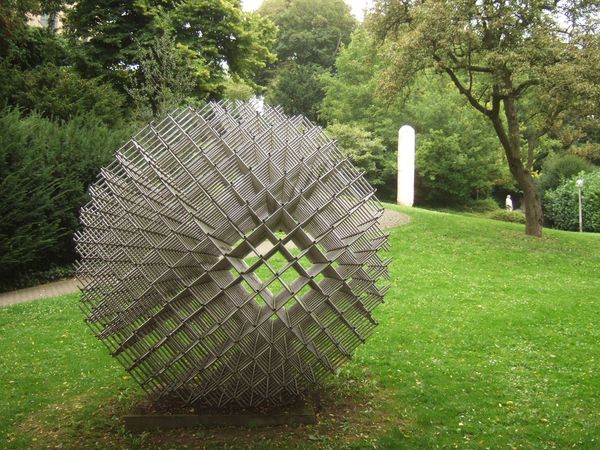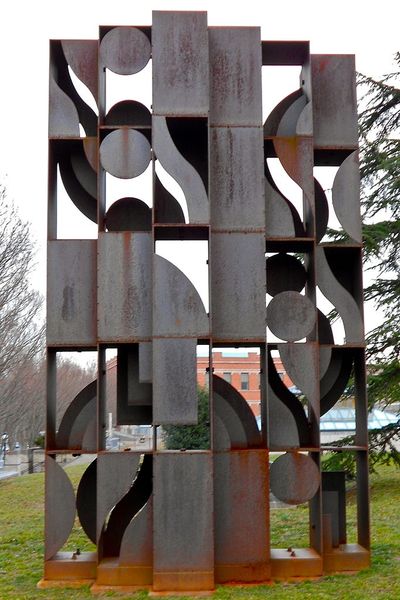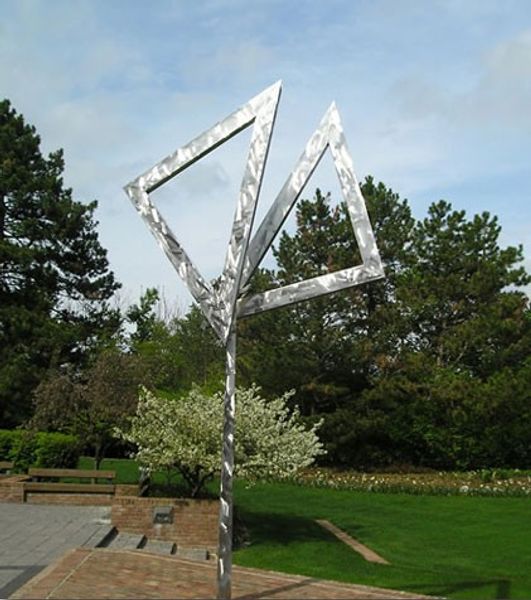
metal, sculpture
#
kinetic-art
#
metal
#
sculpture
#
constructivism
#
geometric
#
sculpture
#
abstraction
Copyright: George Rickey,Fair Use
Editor: Here we have George Rickey’s "Space Churn" from 1972, a metal sculpture. It's quite captivating, almost like a mechanical flower in motion. What strikes me most is how static materials create such a dynamic presence. How do you see this piece? Curator: The allure of "Space Churn" resides in its direct engagement with materiality and industrial production. Look at the cool, unadorned metal, forged into geometric shapes. Rickey, emerging from a post-war context, directly confronted the increasing mechanization of life. This isn't bronze casting evoking heroic narratives. Editor: So you’re saying its materials and the way it’s constructed is key to its meaning? Curator: Precisely. Consider the kinetic aspect; its movement is entirely dependent on the external force of wind. This exposes the sculpture’s reliance on natural forces to fulfill its aesthetic program. Editor: How does that challenge more traditional ideas about sculpture? Curator: Traditionally, sculpture aimed to be monumental, permanent, an enduring statement of artistic will. "Space Churn" in its ephemerality, embraces change and the effects of the environment, it’s meant to subtly respond, not to dominate. The beauty lies in its unpretentious acknowledgment of physical reality. Editor: It's like he's demystifying sculpture. I appreciate that you brought up its connection to the means of production, especially within that postwar context. Curator: And in understanding this, you move beyond appreciating simply an abstract shape, and begin to investigate art as a mirror to societal change and industrial consumption. I’m glad you could explore beyond its superficial appearance.
Comments
No comments
Be the first to comment and join the conversation on the ultimate creative platform.
